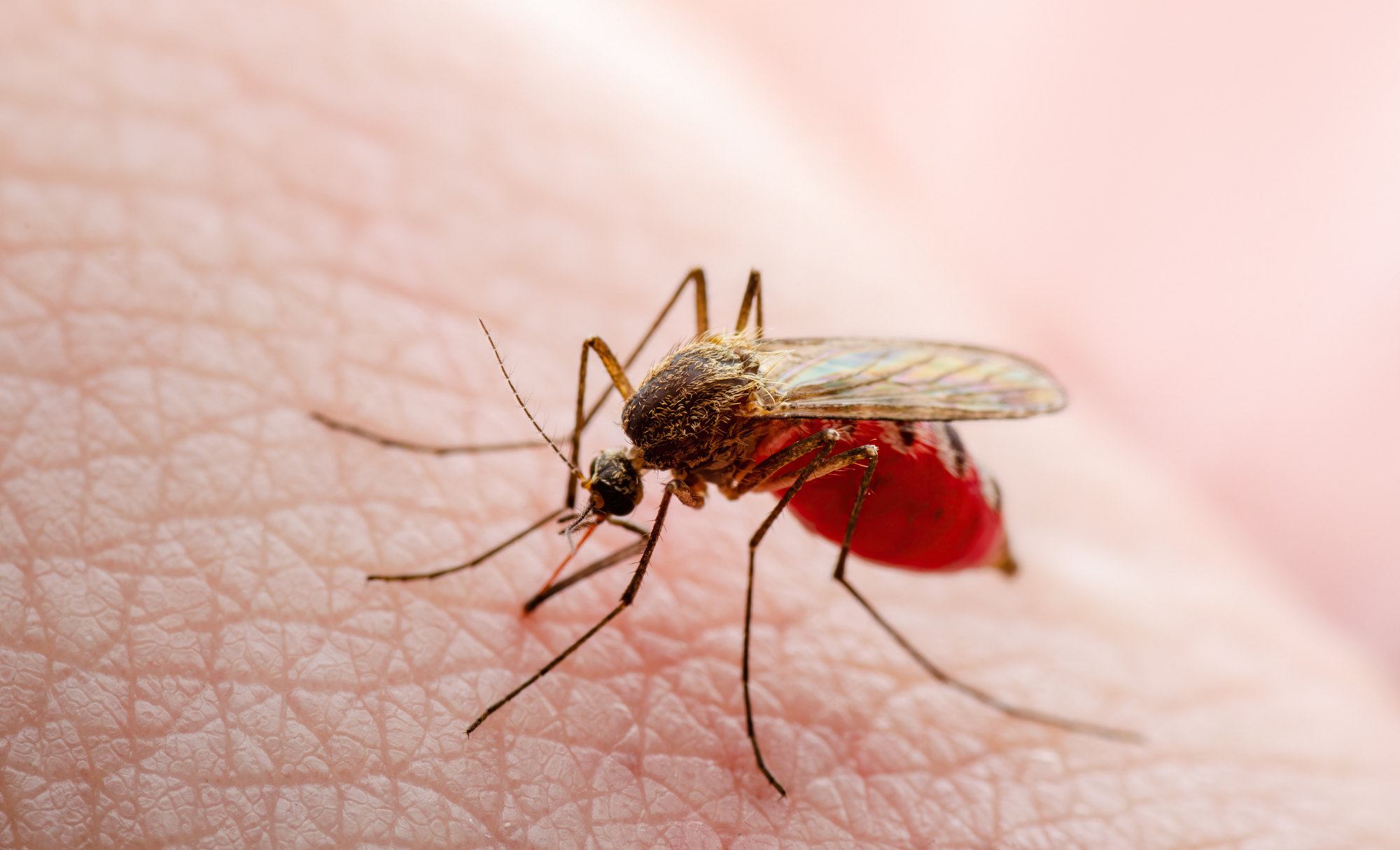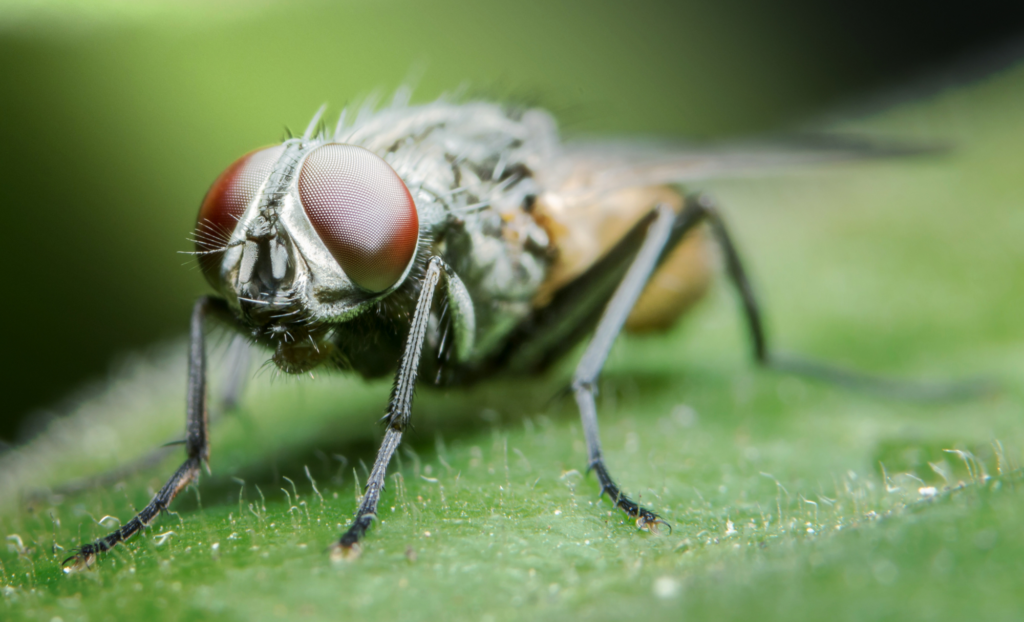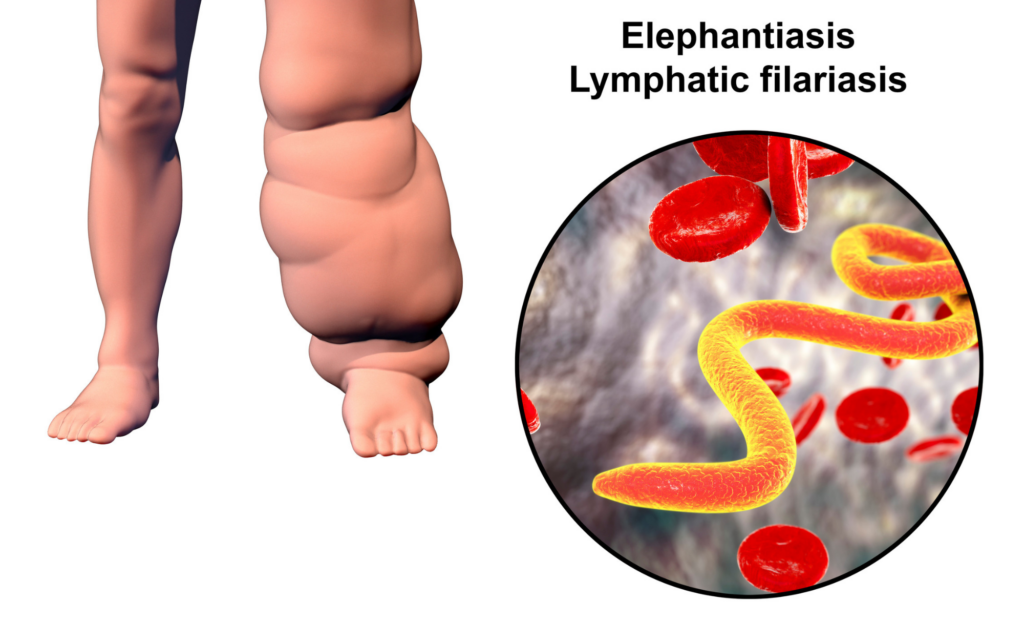Your cart is currently empty!

How to Combat Neglected Tropical Diseases
Every year, millions of people around the world suffer from neglected tropical diseases (NTDs). These infectious diseases thrive in tropical and subtropical regions, especially where healthcare access and sanitation are limited. Global health leaders often overlook these diseases, despite their widespread impact, and give them less attention than other conditions.
January 30th marks World Neglected Tropical Diseases Day, a day dedicated to raising awareness about these diseases, highlighting the efforts being made to combat them, and calling attention to the urgent need for action. Health organizations have made progress in recent years, but the work is far from over. We must do more to reduce the suffering caused by NTDs. It’s also essential to ensure that affected communities have access to the resources they need.
In this post, we’ll explore what neglected tropical diseases are and discuss some of the most common NTDs. We’ll also examine how they impact individuals and communities. Finally, we’ll highlight public health efforts working to reduce their spread and eliminate them altogether.
What Are Neglected Tropical Diseases?
Neglected tropical diseases (NTDs) are a group of infectious diseases that primarily affect people living in poverty, particularly in tropical and subtropical regions of the world. These diseases often thrive in areas where access to clean water, sanitation, and healthcare is limited. Global health initiatives often overlook NTDs, despite their widespread impact. These diseases receive less attention and funding than HIV/AIDS, malaria, and tuberculosis.
NTDs include a wide range of diseases. Many have been historically overlooked because they primarily affect impoverished areas and carry heavy social stigma. The term “neglected” highlights the lack of funding and research devoted to these diseases. It also shows how often public health leaders leave them out of important conversations.
Why Are NTDs Neglected?
NTDs often strike the most marginalized communities in low-income countries, yet many healthcare systems fail to prioritize them. Many NTDs are chronic and cause debilitating long-term effects, but they are rarely fatal. This contributes to the lack of urgency in addressing them globally. Additionally, public awareness of these diseases is often low, leading to fewer resources allocated to their prevention and treatment.
Despite these challenges, the fight against NTDs has seen significant progress. Global health organizations, governments, and NGOs are working together to expand access to treatments, vaccines, and prevention strategies.
The Global Burden of NTDs
NTDs affect more than 1.7 billion people worldwide, and while they are largely concentrated in low-income countries, their impact is felt in many parts of the world. In areas where NTDs are common, they lead to many health and social challenges. These include physical disabilities, cognitive impairment, and social exclusion.
The burden of these diseases extends beyond just the health consequences—they also contribute to the cycle of poverty. People suffering from NTDs may experience reduced productivity, loss of income, and high healthcare costs, further entrenching them in poverty.
When we understand what NTDs are and how they impact communities globally, we can start addressing key barriers. From there, we can work toward more equitable solutions for everyone affected.

Common Neglected Tropical Diseases
Neglected tropical diseases (NTDs) are a diverse group of diseases that affect millions of people, mostly in tropical and subtropical regions. These diseases range from those that cause visible disfigurement to others that damage internal organs. Without treatment, many conditions can lead to chronic disability or even death. Each disease may affect people differently, but many share similar traits. These diseases most commonly affect impoverished regions, and global health efforts have long overlooked them.
Here are some of the most common and well-known neglected tropical diseases:
Dengue Fever
- What it is: A viral infection transmitted by the Aedes mosquito, dengue is a major health concern in tropical and subtropical regions.
- Symptoms: High fever, severe headaches, pain behind the eyes, joint and muscle pain, and skin rashes. Severe cases, known as dengue hemorrhagic fever, can cause bleeding, blood plasma leakage, and organ failure.
- Impact: Dengue causes millions of cases worldwide every year. It also puts a heavy strain on healthcare systems in the areas it affects.
Chagas Disease
- What it is: Caused by the parasite Trypanosoma cruzi, Chagas disease is transmitted through the bite of an infected triatomine bug, also known as the “kissing bug.”
- Symptoms: Early symptoms are mild, including fever and swelling at the bite site. If left untreated, it can lead to severe heart and gastrointestinal problems, such as cardiomyopathy and megaesophagus.
- Impact: Chagas disease is most common in Latin America, where it is responsible for millions of infections and long-term disability.
Leishmaniasis
- What it is: Leishmaniasis is caused by a parasitic infection transmitted by the bite of an infected sandfly. It comes in several forms, including cutaneous leishmaniasis (affecting the skin), visceral leishmaniasis (affecting internal organs like the liver and spleen), and mucocutaneous leishmaniasis (which affects the mucous membranes).
- Symptoms: Skin sores, ulcers, fever, weight loss, and enlarged organs (in visceral leishmaniasis).
- Impact: Leishmaniasis is common in parts of Asia, Africa, and Latin America. If left untreated, it can lead to long-term disfigurement and even death.
Trachoma
- What it is: Trachoma is a bacterial infection of the eyes caused by Chlamydia trachomatis, and it is the leading cause of preventable blindness worldwide.
- Symptoms: Redness, itching, and irritation of the eyes, which can lead to scarring and blindness over time if untreated.
- Impact: Trachoma primarily affects people living in rural areas of sub-Saharan Africa, Asia, and the Middle East. Poor sanitation and limited access to clean water contribute directly to its spread.
Schistosomiasis
- What it is: Caused by parasitic worms, schistosomiasis is transmitted through contact with contaminated freshwater.
- Symptoms: Abdominal pain, blood in the urine or stool, fatigue, and in severe cases, liver or kidney damage.
- Impact: Schistosomiasis affects millions of people worldwide, particularly in Africa, Asia, and South America. It contributes to chronic illness, disability, and can hinder economic productivity due to its long-term effects.
Onchocerciasis (River Blindness)
- What it is: Caused by the parasitic worm Onchocerca volvulus, onchocerciasis is transmitted through the bite of infected blackflies.
- Symptoms: Severe itching, skin rashes, and eye lesions, which can lead to permanent blindness.
- Impact: This disease is especially widespread in Africa. It has a major economic and social impact, particularly in rural communities.
Lymphatic Filariasis (Elephantiasis)
- What it is: Caused by parasitic worms, lymphatic filariasis affects the lymphatic system, leading to severe swelling, often in the legs, arms, and genital area.
- Symptoms: Swelling (elephantiasis), skin thickening, and chronic pain.
- Impact: Lymphatic filariasis can lead to long-term disability and social stigma, affecting millions of people in Asia, Africa, and the Pacific Islands.
These diseases may not get as much attention as other global health issues. Still, they have a profound effect on health, economies, and overall quality of life. Preventing, diagnosing, and treating NTDs is essential for improving public health. Impoverished regions especially need support because they often lack adequate healthcare resources. Tackling NTDs also contributes to breaking the cycle of poverty and improving the overall well-being of affected communities.
Impact of Neglected Tropical Diseases
Neglected tropical diseases (NTDs) don’t always make headlines. However, they have a deep impact on global health, economies, and social well-being. Affecting more than 1.7 billion people worldwide, NTDs primarily impact communities living in poverty, particularly in tropical and subtropical regions. The consequences of these diseases extend far beyond physical symptoms, contributing to a range of health, economic, and social issues that can keep communities trapped in cycles of poverty.
Health Impact of NTDs
The health consequences of NTDs are vast and often lead to chronic illness, disability, and sometimes death.
- Chronic disabilities: Many NTDs, such as lymphatic filariasis (elephantiasis) and onchocerciasis (river blindness), can cause long-term physical impairments, including disfigurement, blindness, and loss of mobility.
- Organ damage: Diseases like schistosomiasis can severely damage internal organs such as the liver, kidneys, and bladder. This damage can interfere with a person’s ability to live a healthy, active life.
- Increased susceptibility to other diseases: NTDs can weaken the immune system, making individuals more vulnerable to other infections and diseases. For example, leprosy can cause nerve damage in certain parts of the body. This loss of sensation raises the risk of secondary infections in those affected areas.
Economic Burden
NTDs place a significant financial burden on individuals, families, communities, and entire nations.
- Reduced productivity: People suffering from NTDs often experience long-term illness, making it difficult for them to work or care for their families. Widespread illness reduces productivity and hurts the local economy, especially in heavily affected areas.
- High healthcare costs: Treating NTDs requires ongoing medical attention, which can be a financial strain on already vulnerable populations. Many people lack access to affordable treatment options. As a result, illnesses last longer and lead to higher costs over time.
- Cycle of poverty: The impact of NTDs can trap families in poverty, as individuals may not be able to work due to illness, leading to financial instability and limited access to healthcare. This can perpetuate a cycle of poverty, making it harder for communities to break free from the grips of NTDs.
Social and Psychological Impact
The social consequences of NTDs are deeply felt by individuals and entire communities.
- Social stigma: Many NTDs, such as leprosy and onchocerciasis, are associated with visible deformities or disabilities, leading to social stigma, discrimination, and exclusion. Stigma can lead communities to ostracize individuals, cutting them off from education, employment, and social support.
- Psychological effects: The chronic nature of NTDs, combined with the social stigma, can lead to feelings of isolation, depression, and anxiety. NTDs can leave people feeling helpless, especially when they live in areas with limited healthcare or no available treatment.
- Educational setbacks: Children affected by NTDs may experience learning difficulties or be unable to attend school regularly due to illness or stigma, affecting their education and future opportunities.
Global Health Inequities
NTDs disproportionately affect the poorest and most vulnerable populations.
- Lack of access to healthcare: People living in remote or impoverished regions often lack access to basic healthcare services, preventing early diagnosis and treatment of NTDs.
- Poor sanitation: Many NTDs, such as schistosomiasis and soil-transmitted helminths, are linked to poor sanitation and contaminated water sources, which are common in impoverished areas.
- Healthcare inequity: In many low-income countries, the resources dedicated to treating NTDs are limited, leading to delays in diagnosis, inadequate treatments, and ongoing suffering.
Long-Term Global Impact
NTDs are not just a local health issue—they have a far-reaching global impact.
- Economic development: The economic burden of NTDs limits the development of affected countries, preventing them from achieving their full economic potential. The loss of productivity, high healthcare costs, and the perpetuation of poverty caused by NTDs can hinder overall economic growth.
- Global health security: NTDs contribute to the overall disease burden, making it harder for countries to control other infectious diseases. By addressing NTDs, we not only improve the lives of those affected but also work toward a healthier and more stable world.
Neglected tropical diseases affect more than just individual health and well-being. They also undermine the prosperity and stability of entire communities. While significant progress has been made in controlling and eliminating some NTDs, much work remains to be done. When we raise awareness, support research, and improve access to care, we take real steps toward progress. These efforts can reduce the global burden of NTDs and improve life for millions of people.

Public Health Initiatives for Neglected Tropical Diseases
Efforts to combat neglected tropical diseases (NTDs) have gained significant momentum in recent years, thanks to the collaboration of governments, international organizations, and grassroots health initiatives. These diseases often receive less attention than other global health threats. However, more people are beginning to recognize their widespread impact, especially in low-income communities. Public health initiatives play a key role in reducing the burden of NTDs. In many cases, they’ve led to major progress in controlling and even eliminating these diseases.
Global Health Organizations’ Efforts
Several organizations, including the World Health Organization (WHO), The Global Fund, and The Bill & Melinda Gates Foundation, have made significant strides in tackling NTDs through coordinated global efforts.
- World Health Organization (WHO): The WHO has developed an NTD roadmap aiming to eliminate or control 10 key NTDs by 2030. The organization works with national governments and local healthcare systems to increase awareness, provide treatment, and establish preventive measures.
- The Global Fund: This organization supports the fight against NTDs by funding treatment programs, research, and health systems strengthening in endemic regions.
- The World Bank and USAID: These organizations also support large-scale health programs that provide funding and technical assistance for NTD control in low-income countries.
Preventive Measures and Mass Drug Administration (MDA)
Mass Drug Administration (MDA) is one of the most effective strategies to fight NTDs. This approach provides preventive medication to entire populations, even if individuals don’t show symptoms.
- MDA programs have been instrumental in reducing the prevalence of several NTDs, including lymphatic filariasis, trachoma, and schistosomiasis.
- Preventive chemotherapy: These programs distribute free, safe medications that treat a range of NTDs, reducing the transmission rates and preventing long-term disabilities associated with these diseases.
- Periodic treatments: In some cases, mass drug treatments are given annually or bi-annually to entire communities in endemic regions.
Health Education and Awareness
Raising awareness about NTDs is vital in reducing stigma and encouraging people to seek treatment. Diseases like leprosy and onchocerciasis are often linked to social exclusion. Public health programs work to educate communities about prevention and treatment to reduce stigma and improve outcomes.
- Community-based programs: Local health workers and organizations often play a central role in educating communities about the risks of NTDs and how to prevent them.
- Reducing stigma: Campaigns to reduce the social stigma associated with NTDs are essential for encouraging affected individuals to seek treatment without fear of discrimination.
- Media campaigns: Leveraging radio, television, and social media helps spread awareness and dispel myths about NTDs, especially in remote or underserved areas.
Improved Access to Clean Water and Sanitation
Many NTDs, such as schistosomiasis and soil-transmitted helminths, are linked to poor sanitation and lack of access to clean water. Public health efforts to improve water, sanitation, and hygiene (WASH) are crucial for preventing the spread of these diseases.
- Water treatment initiatives: Programs to provide clean drinking water and proper sanitation facilities help reduce the risk of transmission.
- Health infrastructure development: Building better healthcare facilities and providing basic healthcare services to rural or underserved areas can ensure early detection and treatment of NTDs.
Vaccine Development and Research
In addition to improving access to treatment, ongoing research into vaccines for several NTDs is a priority. Vaccine development holds the promise of providing long-term solutions for the prevention of diseases like leishmaniasis and dengue fever.
- Dengue vaccine: A dengue vaccine has been developed and is being used in some endemic areas to prevent the spread of this debilitating disease.
- Ongoing research: Continued funding and collaboration in research efforts will eventually lead to more vaccines and treatment options for NTDs, significantly reducing their global impact.
Public health initiatives are central to the fight against neglected tropical diseases. We can reduce the burden of these diseases by improving access to treatment, promoting prevention, and educating communities. With continued investment in research and infrastructure, we can also move closer to their eradication. While challenges remain, the global effort to combat NTDs is making progress, and greater awareness and funding are essential to continue this vital work.
World Neglected Tropical Diseases Day serves as an important reminder of the widespread impact that neglected tropical diseases (NTDs) have on millions of people around the world. Despite being preventable and treatable, NTDs continue to cause suffering, disability, and death, particularly in impoverished communities with limited access to healthcare.
By raising awareness and supporting public health initiatives, we can work together to combat these diseases and reduce their devastating effects. Global efforts to eliminate NTDs are already showing progress. We need continued dedication, funding, and education to break the cycle of poverty and disease.
As we observe World Neglected Tropical Diseases Day, let’s reflect on the progress that has been made and the work still left to do. Join the global movement to end the suffering caused by NTDs by spreading awareness, supporting organizations working on the ground, and advocating for better healthcare access for those in need.
Stay informed about global health issues and learn how you can make a difference by signing up for our newsletter. You’ll receive updates, resources, and more ways to get involved in the fight against NTDs.

Leave a Reply